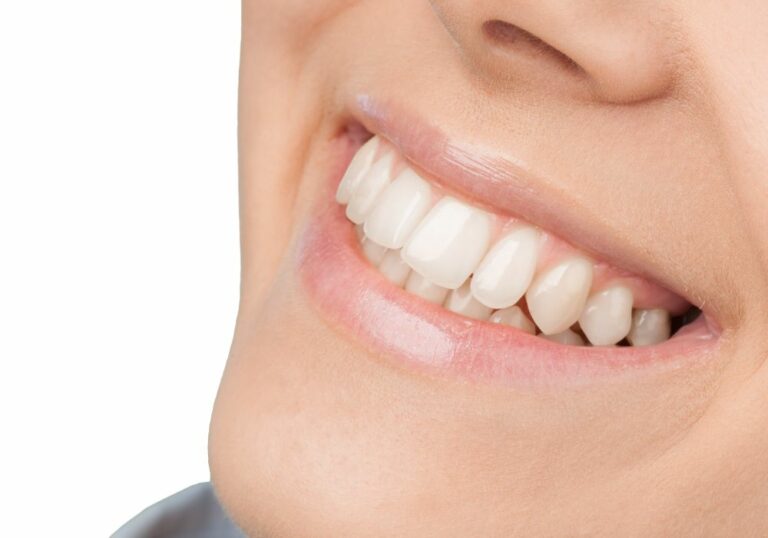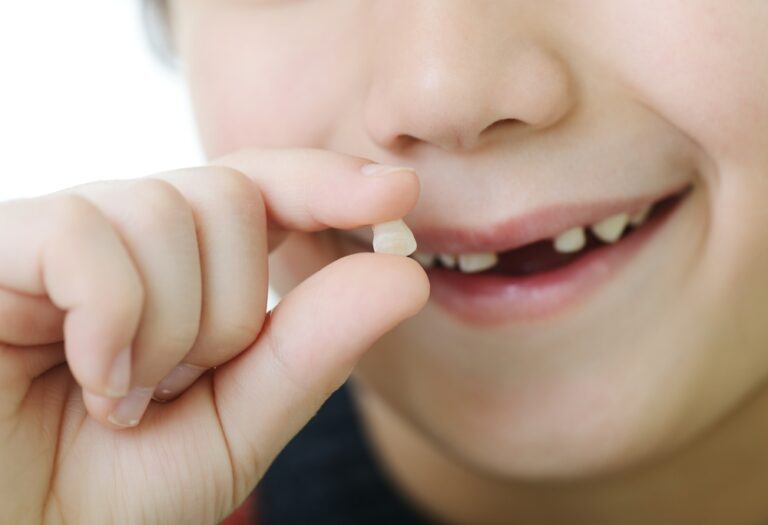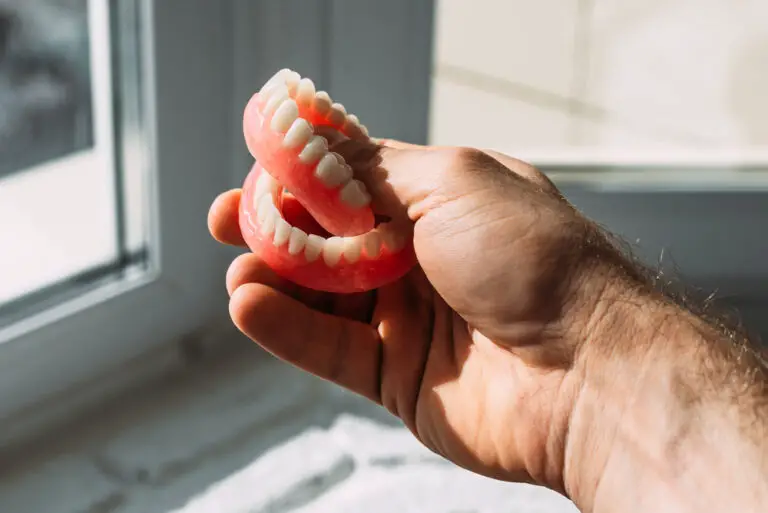The connection between dental issues and sinus problems
There is a close connection between the teeth, mouth, and sinuses. The maxillary sinuses, located behind the cheekbones, rest just above the upper back teeth and have an opening into the nose. Meanwhile, the roots of the upper back molars and premolars extend up into the maxillary sinuses.
This anatomical proximity means that problems with the upper back teeth, especially molars and premolars, can sometimes contribute to sinus issues. Here’s a more in-depth look at how this occurs:
Infection
An infection in the tooth, known as a dental abscess, can spread into the sinus. A dental abscess typically results from severe tooth decay, a failed root canal treatment, or advanced periodontal disease. The infection causes a buildup of pus at the tooth’s root tip inside the jawbone. Due to the close proximity, this infected material can easily spread into the sinus cavity above it. The result is acute or chronic sinusitis.
Dental abscesses contain high levels of pathogenic bacteria that infect the sinus lining. Common ones include Streptococcus, Prevotella, Fusobacterium, and Actinomyces species. The sinuses are normally sterile, so they can get overwhelmed by this influx of bacteria from the tooth, leading to inflammation and pus formation.
Cysts
Cysts sometimes form around the tips of infected tooth roots, appearing as round lesions on xrays. A dental cyst that extends upward into the maxillary sinus can occupy space within the sinus cavity. The cyst takes up room within the sinus, obstructing mucus drainage pathways. This blockage of proper sinus drainage allows mucus and fluids to accumulate, causing chronic sinusitis with congestion, postnasal drip, pain, and recurring infections.
If the cyst itself becomes infected, it can rupture and spill infected material directly into the sinus. This is another pathway for acute sinus infection.
Foreign objects
During certain dental procedures, small foreign objects like tooth fragments, bits of dental tools, or dental fillings could get displaced into the maxillary sinus above the tooth site. The sinus reacts to these foreign materials by mounting an inflammatory response. The result is irritation, swelling, and compromised function of the sinus lining. This can lead to symptoms of sinusitis like facial pain, congestion, and recurring infections.
If large enough, foreign bodies displaced into the sinus may need to be surgically retrieved. Additionally, the inflammation itself can cause polyp formation or adhesions in the sinus cavity.
Loss of teeth
After a maxillary molar or premolar tooth is extracted, the sinus cavity above often pneumatizes and expands downward into the empty tooth socket. This reduces the normal air space within the sinus. It can also alter mucus drainage pathways, allowing mucus accumulation. These changes impair sinus function, potentially contributing to chronic sinusitis.
Additionally, the loss of chewing forces when teeth are extracted can allow atrophy and shrinkage of the upper jawbone. This also diminishes the sinus space and predisposes to sinus inflammation.
Irritation
A sharp tooth root fragment exposed in the sinus lining may mechanically irritate the tissue, causing pain and inflammation. Certain dental materials placed for procedures like root canals could also irritate or provoke an inflammatory reaction in the sinus lining if they contact or extend upward into sinus tissues. This irritation can contribute to sinus congestion and pain.
Signs a bad tooth is affecting your sinuses

Here are some common signs and symptoms that a problem with an upper back tooth may be contributing to sinus issues:
- Sinus congestion or pressure that doesn’t respond to conventional treatments like decongestants or nasal steroid sprays
- Recurring sinus infections that need repeated antibiotic treatment
- Facial pain or headache focused in the upper teeth or maxillary sinus region
- Purulent, discolored nasal discharge or postnasal drip
- Reduced or lost sense of smell
- Halitosis (bad breath) from chronic sinus drainage
- Toothache or tooth pain when bending over or lying down as it puts pressure on the tooth root tips
- Pain or tenderness when palpating the upper back teeth, gums, cheekbone, or maxillary sinus area
- Swelling, fullness, or puffiness around the upper teeth and cheekbone region
- A persistent foul, metallic taste in the mouth
- Fatigue or dental hypersensitivity as swelling impinges on the tooth’s nerve supply
- A sinus infection that keeps recurring even after multiple rounds of antibiotics
If stubborn sinus congestion, pain, and facial pressure linger despite over-the-counter sinus medication, examine your symptoms closely, and see both a dentist and ENT specialist. Be sure to mention your tooth and sinus symptoms to identify any dental contribution.
Diagnosing a sinus issue caused by a bad tooth
To pinpoint whether a dental issue is contributing to sinus problems, the dentist will perform a clinical exam and order imaging tests. Here are typical diagnostic approaches:
Clinical examination
- Examination of the teeth, gums, jaw, and sinuses for signs of infection like swelling or discharge
- Palpation of the face and sinus areas to check for tenderness
- Tapping on teeth to test for dental sensitivity or pain, which may indicate infection
- Pressing on various tooth surfaces to identify the origin of pain
- Checking for loose teeth, which can indicate advanced infection
- Evaluating the bite and occlusion for problems
Dental x-rays
- Periapical x-rays – Shows details around tooth roots and surrounding bone. Can spot dental abscesses, cysts, and bone destruction.
- Panorex x-ray – Single panoramic view of all upper and lower teeth plus the jawbones and sinuses. Allows identification of pathology and sources of infection.
- Cone beam CT scan – Provides a 3D image of the relationship between teeth, jaws, and sinuses. Excellent for precise detail.
ENT imaging tests
- Maxillofacial CT scan – Highly detailed CT images of the sinuses and face. Helps identify sinus infection sources.
- Endoscopy – Lets the ENT view inside the sinus cavities to locate obstruction, polyps, etc.
- MRI – Provides clear images of soft tissues like the sinus membrane lining.
These imaging studies help dentists and ENTs visualize dental abscesses, cysts, foreign objects, and other pathology that may be causing secondary sinus inflammation.
The dentist will also take a thorough medical history, asking about any sinus congestion, facial pain, postnasal drip, headache, or other symptoms. Your reports of symptoms provides key details.
Treating sinus problems caused by a bad tooth

If a dental issue is diagnosed as the underlying source of recurrent or persistent sinusitis, prompt treatment of the offending tooth is critical. This removes the source of infection and irritation. Here are some common treatment approaches:
Treating tooth infections
- Root canal therapy – This deep cleaning of the tooth interior removes infected pulp tissue. Often combined with antibiotics.
- Apicoectomy – Surgically removes the tip of the tooth root and surrounding infected tissue.
- Extraction – Pulling the infected tooth eliminates the source of bacteria. The sinus can then start to heal.
Removing cysts or lesions
- Surgical excision – Infected or sizable cysts are drained and entirely removed to prevent recurrence.
- Marsupialization – Larger cysts are surgically opened and lined with sinus membrane, which remains open for drainage.
Taking out foreign objects
- Functional endoscopic sinus surgery (FESS) – The ENT inserts an endoscope into the sinus and meticulously locates and removes any foreign material.
- Caldwell-Luc procedure – Creates a temporary opening in the front sinus wall for better visualization and access for foreign body removal.
Other options
- Oral antibiotics – Prescribed alongside dental treatment to clear stubborn sinus infections caused by dental bacteria.
- Sinus surgery – If concurrent issues like a deviated septum, nasal polyps, or fungal sinusitis are present, sinus surgery may be recommended along with dental treatment.
- Jawbone resection – Sections of chronically infected jawbone may be surgically removed to eliminate the source of infection.
The key is addressing the original dental issue to stop the cycle of recurrent sinus infections. Liaising with both your dentist and ENT doctor ensures all factors are properly treated.
Can a sinus infection spread to your teeth?
While dental infections often spread into the maxillary sinuses, the reverse is also true. Sinus infections, especially fungal sinusitis or chronic cases, can sometimes spread down into the upper jawbone and affect the teeth. Here are a few ways this can occur:
- Chronic thick sinus inflammation allows pathogenic bacteria to migrate from the infected sinus down into the jawbone along the tooth roots. This can lead to inflammation, bone loss, and periodontal disease around upper back molars.
- A sinus infection could drain into and re-infect an existing dental abscess or periodontal pocket around a tooth, worsening the tooth infection. The bone then becomes a reservoir of infection.
- Thick mucus discharge dripping down the throat from chronic sinusitis can change the pH balance in the mouth, making it more acidic. This increased acidity damages tooth enamel and causes increased dental decay.
- Persistent systemic inflammation from chronic sinusitis may raise cytokines like TNF-alpha and IL-1. Research indicates this excessive inflammatory response contributes to gum disease.
So while odontogenic issues often affect the adjacent sinus cavities, sinus disease can reciprocally impact oral health. Treating infections promptly in both areas, the teeth and sinuses, is crucial to avoid having infections spread.
Can a sinus infection cause tooth pain without dental problems?

Yes, sinusitis can sometimes cause tooth pain even when the teeth themselves are healthy. This typically occurs when the infection and inflammation in the maxillary sinus puts pressure on the root apices of the upper molars/premolars, which sit right beneath that sinus cavity.
The result is referred pain, where the brain perceives the sinus pressure and inflammation as coming from the adjacent teeth. Typical characteristics of sinus-related tooth pain are:
- Diffuse pain affecting multiple upper back teeth, rather than an isolated tooth
- Toothache that worsens when tilting the head forward or lying down as it further presses on the congested sinus
- Tooth sensitivity or pain that comes and goes along with the sinus infection flares
- No apparent tooth defects like cracks, caries, or trauma are visible on exam or x-rays to explain the pain
- Standard dental treatments like dental restorations, root canals, or tooth extractions do not resolve the toothache
See both your dentist and ENT specialist if your symptoms point to sinusitis as a possible cause of referred tooth pain. Treating the sinus infection will often promptly resolve the tooth discomfort once the infection is cleared.
Preventing sinus problems from bad teeth
You can help avoid the misery of dental-related sinus complications with these proactive prevention tips:
- Brush thoroughly twice a day and floss once daily to remove bacterial biofilm and prevent dental infections.
- See your dentist every 6 months for routine exams and professional cleanings to spot problems early.
- Get cavities, damaged fillings, cracks, and other tooth defects repaired promptly before they can worsen.
- Have recommended treatments like root canals or tooth extractions done in a timely manner.
- Take your daily preventive antibiotics as prescribed if you have a high risk of infection, such as with immune disorders or a prosthetic joint.
- Stop smoking and limit alcohol, as these habits increase the risk of periodontal disease.
- Rinse your sinuses regularly with saline solution to flush out mucus and soothe inflamed tissues.
- Take oral decongestants, antihistamines, or prescription nasal steroid sprays at the first sign of sinus congestion to prevent infections.
- Practice excellent oral hygiene before and after dental work to avoid invasive procedures.
- Inform your dentist about any symptoms of sinus congestion before having upper teeth treated.
With vigilant daily dental care and early management of sinus issues, many patients can avoid serious complications from odontogenic sinusitis. Catching problems early makes treatment much quicker and easier.
Frequently Asked Questions about Sinus Infections and Bad Teeth
Can a sinus infection cause teeth pain or sensitivity?
Yes, sinus pressure and congestion from an infection can radiate pain to the upper back molars and premolars. This is known as referred tooth pain. Sinusitis may also cause tooth sensitivity or discomfort when chewing due to inflammation near the tooth roots pressing on nerve fibers.
What teeth are usually affected by sinus infections?
The upper posterior teeth – first and second molars and premolars – are most often affected by sinus infections because their roots sit directly underneath the maxillary sinuses. Referred pain from maxillary sinusitis is most frequently felt in these upper back teeth.
How do you know if tooth pain is from a sinus infection?
Tooth pain from sinusitis is often diffuse, affecting multiple upper teeth, rather than an isolated tooth. The toothache gets worse when tilting the head forward or when facial sinuses are pressed on. Routine dental treatments to relieve tooth pain are ineffective. And there are no visible problems like decay or cracks in the painful teeth themselves.
Can a tooth infection spread to the brain or cause meningitis?
Yes, dental infections like tooth abscesses very rarely spread beyond the tooth and jaw to cause more serious conditions. Without treatment, infection from a bad tooth could spread through veins or bony structures into the cranial cavity. This may lead to brain abscess, meningitis, stroke, or cavernous sinus thrombosis. Prompt dental treatment is vital.
How can I prevent future sinus problems caused by my teeth?
Practice excellent daily oral hygiene, get regular professional cleanings, treat small dental issues before they become severe infections, avoid smoking, manage seasonal allergies and sinus inflammation proactively, and have regular dental exams to spot problems early. Communicating any symptoms between your dentist and ENT prevents most complications.







